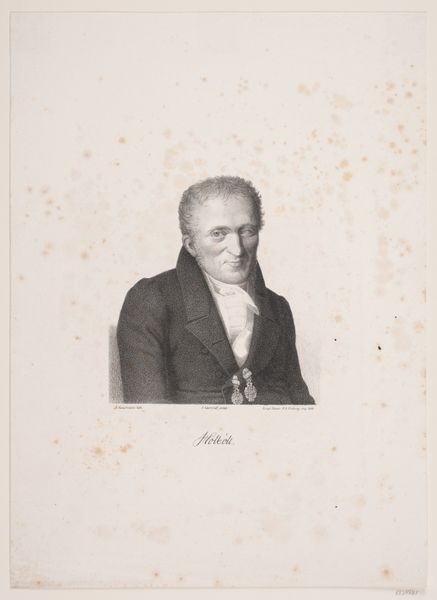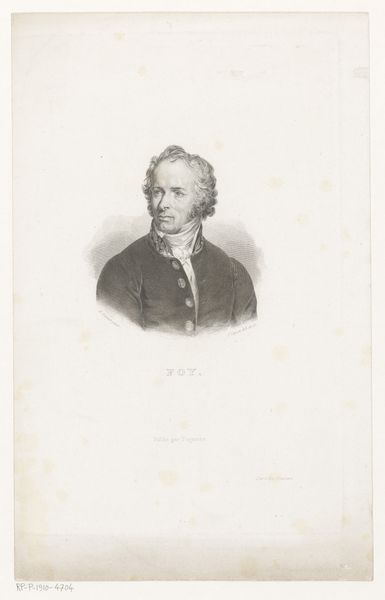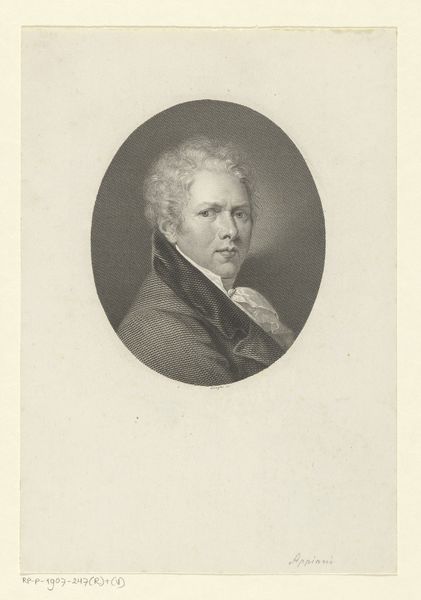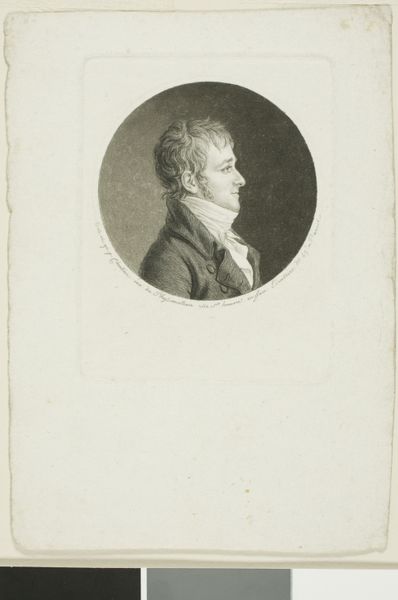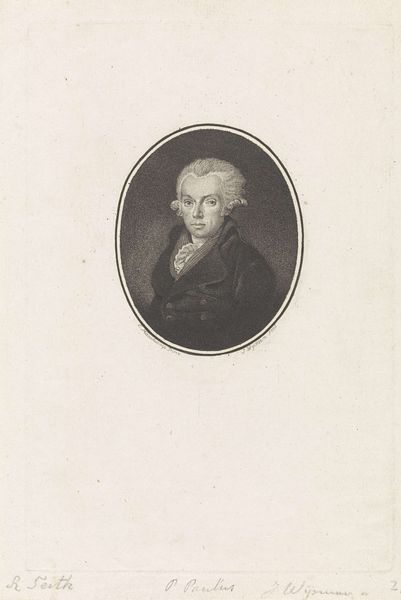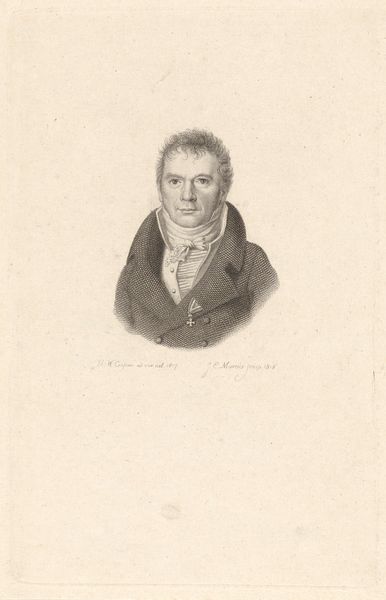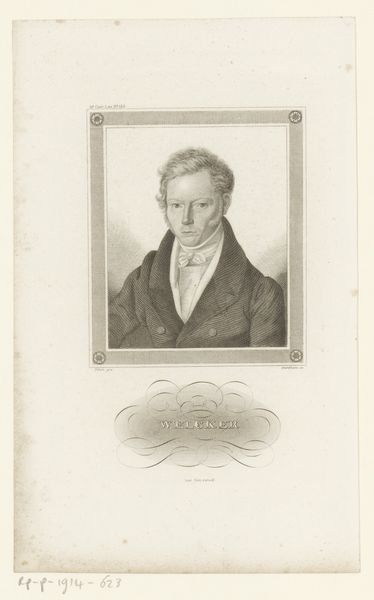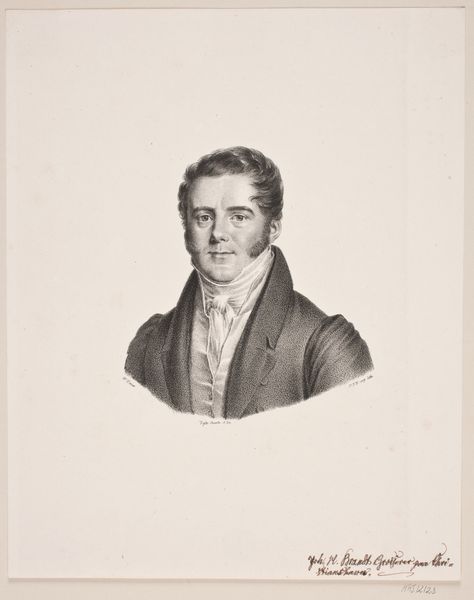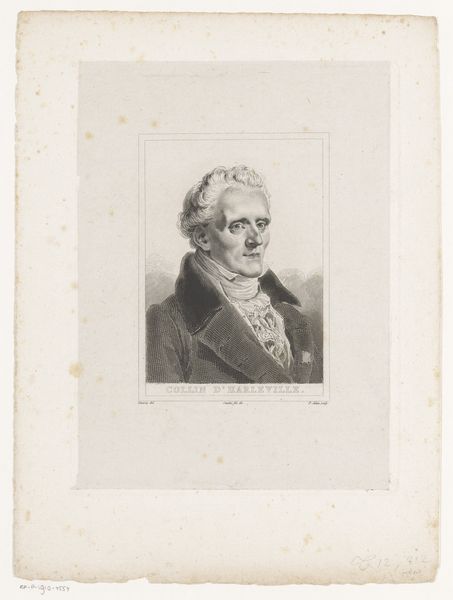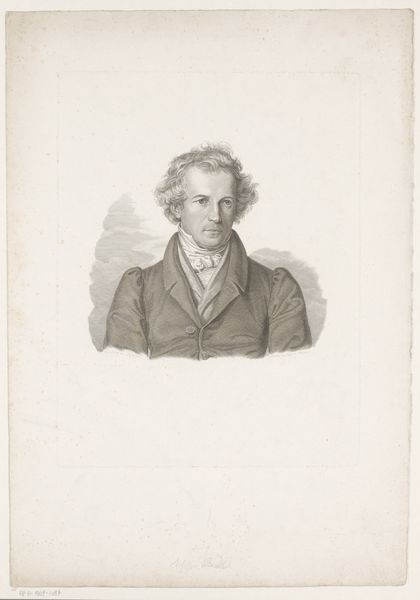
print, engraving
#
portrait
# print
#
old engraving style
#
romanticism
#
engraving
#
realism
Dimensions: height 170 mm, width 108 mm
Copyright: Rijks Museum: Open Domain
Editor: This is Gustav Zumpe's "Portret van Ludwig Tieck," an engraving dating from sometime between 1840 and 1855. There’s something about the detail achieved through the engraving process that gives the portrait a really intense, almost academic, feeling. What do you see in this piece? Curator: I'm immediately drawn to the context of Romanticism in Germany at this time. Tieck, as a writer and critic, was a key figure in shaping the cultural landscape. This portrait, as a publicly distributed print, serves as more than just a likeness. It’s about creating a visual representation of intellectual authority and Romantic ideals for a wider audience. Editor: So, the print format makes it accessible, solidifying Tieck's image? Curator: Precisely. The act of reproducing and distributing Tieck’s image reinforces his role as a public intellectual, whose ideas circulated widely in society. What kind of socio-political implications do you think portraits had at this time? Editor: Well, it seems like possessing and circulating these images was a status symbol and contributed to shaping public perception of influential figures. Almost like a form of propaganda, to some extent? Curator: In a way, yes, though the concept of propaganda as we know it wasn't fully developed then. But you're right to see that portraiture, especially when reproduced like this, served a public function. The image becomes intertwined with the subject’s social standing. Consider how portraits in art history function as public monuments of the individual. Editor: It's fascinating how an image can carry so much historical and social weight! I’ll definitely view portraits differently now. Curator: I'm glad to offer a different perspective, thinking about how art actively shapes society.
Comments
No comments
Be the first to comment and join the conversation on the ultimate creative platform.
